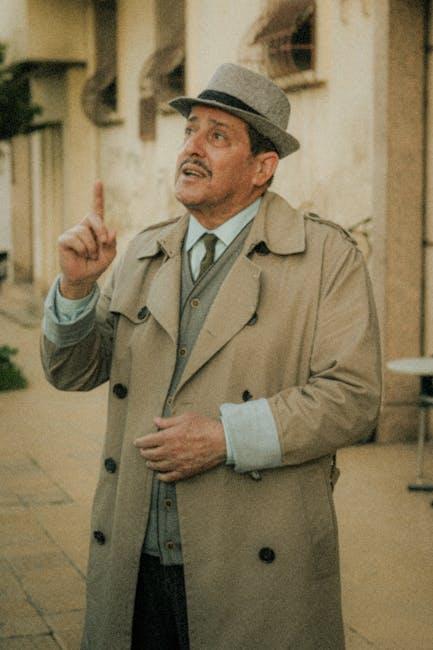In the ever-evolving landscape of visual storytelling, films and TV shows each carve out distinct niches, captivating audiences with their unique narrative styles. While both mediums share the common goal of weaving tales that resonate, the way they unfold these stories is a dance of contrasts. Films, with their grand arcs and singular focus, paint vivid portraits in a matter of hours, while TV shows invite us into sprawling worlds, gradually revealing layers through episodic journeys. This exploration delves into the creative intricacies that distinguish storytelling in films from that in TV shows, offering a fresh perspective on how each captivates our imagination in its own right.
Crafting Narrative Arcs: The Art of Condensed vs. Extended Storytelling
In the realm of visual storytelling, films and TV shows diverge significantly in how they craft their narrative arcs. Films, with their limited runtime, often rely on a condensed storytelling approach. This method demands a tight, focused narrative, where every scene must propel the plot forward or deepen character development. The challenge lies in creating a complete and satisfying story within a restricted timeframe. This often results in a single, well-defined arc that reaches a climax and resolution swiftly, offering viewers an intense, immersive experience.
On the other hand, TV shows have the luxury of time, allowing for extended storytelling. This approach unfolds narratives gradually, often spanning multiple episodes or seasons. It enables creators to explore subplots, develop characters in depth, and build complex worlds. Key features of this method include:
- Character Evolution: Characters can grow and change significantly over time.
- Subplots: Multiple storylines can be interwoven, providing richness and variety.
- World-Building: A detailed and expansive setting can be developed.
While films captivate with their brevity and intensity, TV shows enchant through their ability to weave intricate tapestries of story and character. Both mediums, through their unique approaches, offer distinct and valuable narrative experiences.

Character Development: From Episodic Journeys to Cinematic Transformations
In the realm of storytelling, character development takes on a unique form when comparing films and TV shows. Television series often explore characters through episodic journeys, allowing for gradual evolution. This format provides a canvas for deep dives into backstories, enabling audiences to witness subtle shifts in personality over time. Consider the following characteristics of TV character arcs:
- Slow-burn growth: Characters have the luxury of evolving slowly, with each episode adding layers to their personas.
- Multiple plot threads: Side stories and secondary characters contribute to a richer, more complex narrative.
- Consistent engagement: Viewers develop a sustained relationship with characters, fostering a sense of familiarity and attachment.
In contrast, films encapsulate character transformations within a condensed timeframe, often resulting in more dramatic arcs. The cinematic approach requires characters to undergo significant changes swiftly, leading to a more intense and focused exploration of their journeys. This difference is highlighted by:
- Intense, rapid development: Characters are pushed to their limits, experiencing profound changes within a few hours.
- Centralized focus: A tighter narrative keeps the spotlight on primary characters, ensuring their arcs are compelling and memorable.
- Visual storytelling: Cinematic techniques emphasize emotional depth and transformation through powerful imagery and symbolism.

Visual Storytelling: Leveraging the Canvas of Screen Time
In the realm of visual storytelling, the canvas of screen time plays a pivotal role in shaping narratives across films and TV shows. Films, with their expansive runtime and singular focus, often embrace a more cinematic approach. They craft a concentrated narrative arc, drawing viewers into a meticulously constructed world, rich with symbolism and thematic depth. The brevity of screen time demands a swift yet profound exploration of characters and plot, compelling filmmakers to utilize every frame with purpose and precision.
Conversely, TV shows unravel their stories over extended episodes and seasons, offering a tapestry of evolving subplots and character development. This format allows for a more episodic exploration, where narratives can breathe and grow organically. The luxury of time permits an intricate weaving of storylines, enabling creators to delve into the complexities of characters’ lives and societal themes. This extended engagement fosters a unique relationship with the audience, as they invest in long-term character journeys and evolving story arcs.
- Films: Focused storytelling, cinematic depth, symbolic richness.
- TV Shows: Episodic narratives, character evolution, thematic exploration.

Engaging Audiences: Techniques for Creating Lasting Impact
Capturing the imagination of audiences requires a deft touch and a keen understanding of the medium. Films often employ a more condensed narrative, focusing on delivering a powerful punch within a limited timeframe. The story is typically woven with high stakes and a singular, cohesive plot that drives towards a climactic resolution. This format demands a meticulous attention to visual and auditory detail, creating a sensory experience that lingers in the mind of the viewer.
- Visual Grandeur: The big screen allows for expansive, visually stunning scenes.
- Intense Character Arcs: Characters often undergo significant transformations.
- Symbolic Storytelling: Rich symbolism often underpins the narrative.
In contrast, TV shows unravel stories at a more leisurely pace, providing room for intricate subplots and deeper character development over multiple episodes. This extended format allows for gradual character evolution and complex world-building. The episodic nature keeps audiences engaged through cliffhangers and ongoing mysteries, creating a tapestry of interconnected stories that invite long-term viewer investment.
- Character Depth: Time to explore characters’ backgrounds and motivations.
- Layered Storylines: Multiple narratives can coexist and intersect.
- Audience Engagement: Builds a loyal viewer base through continuous storytelling.

